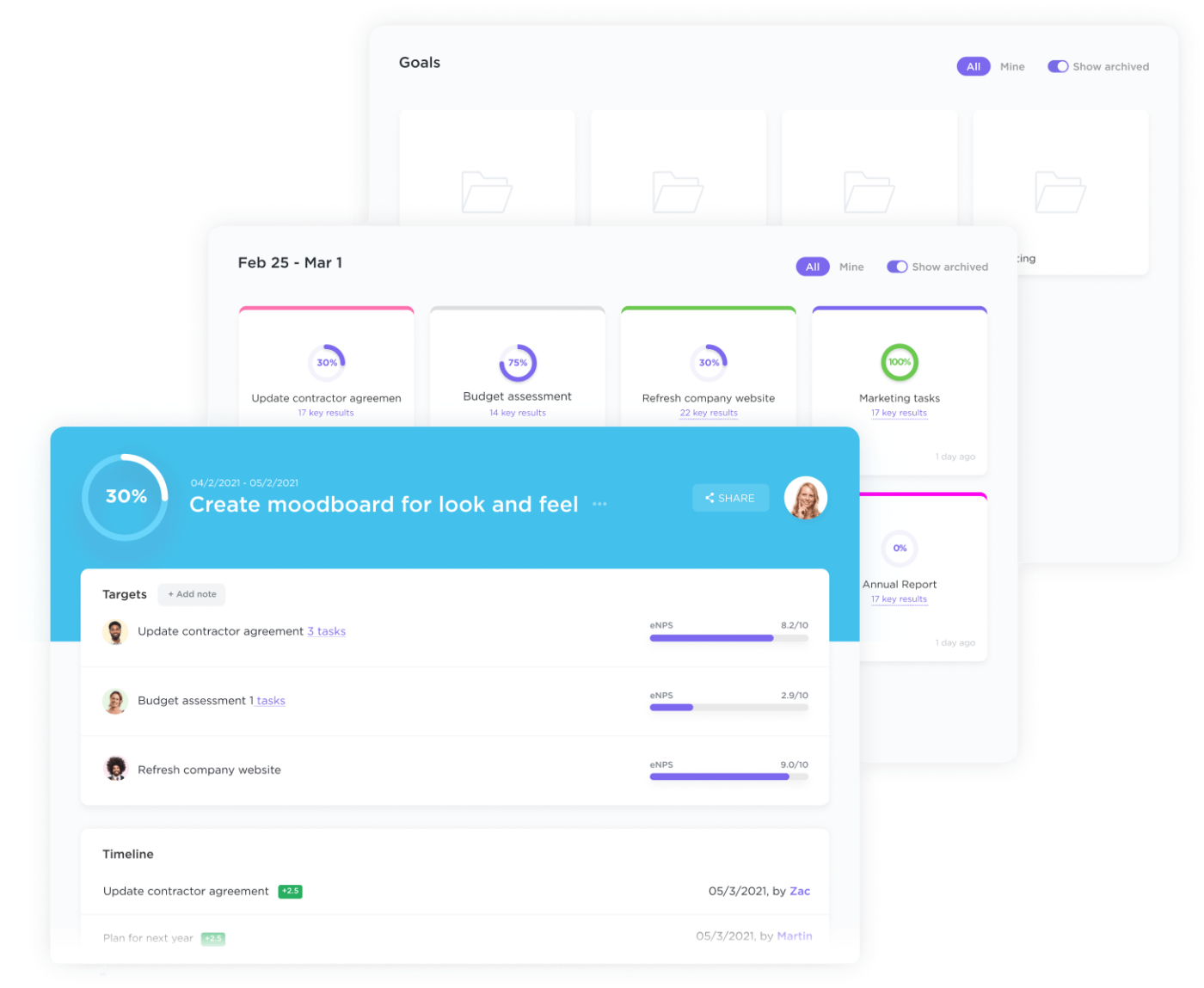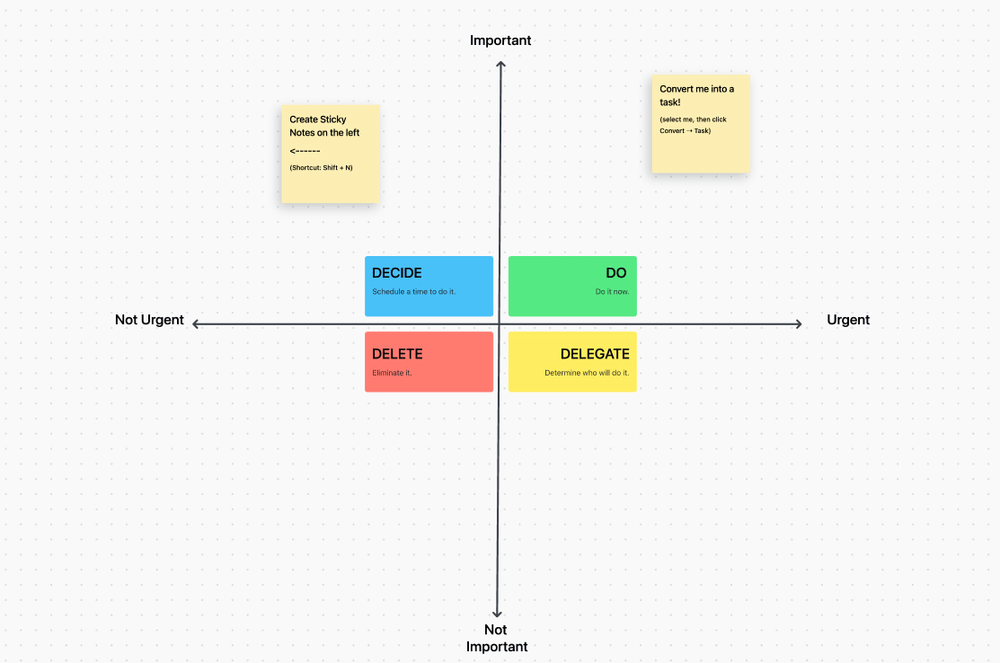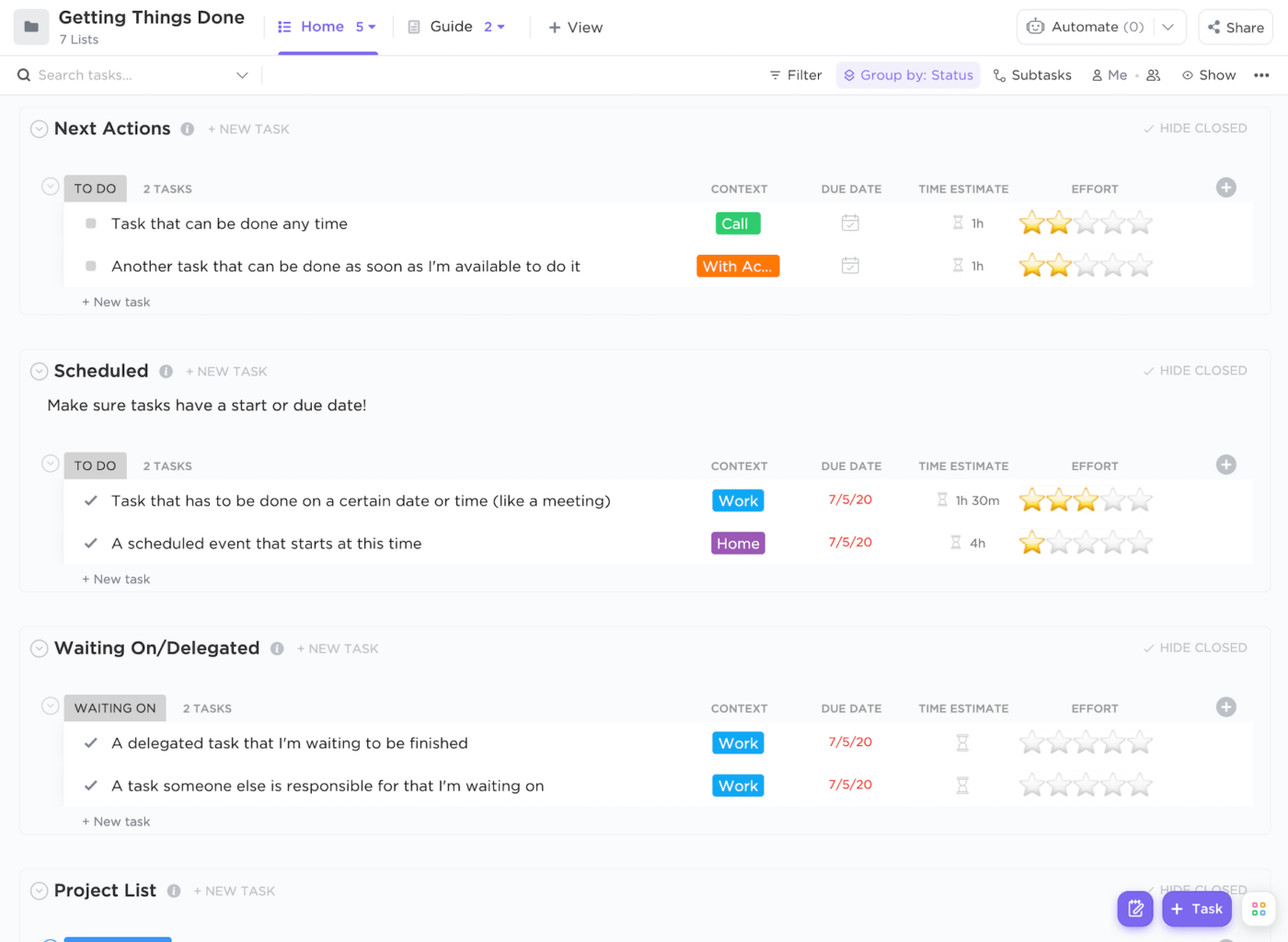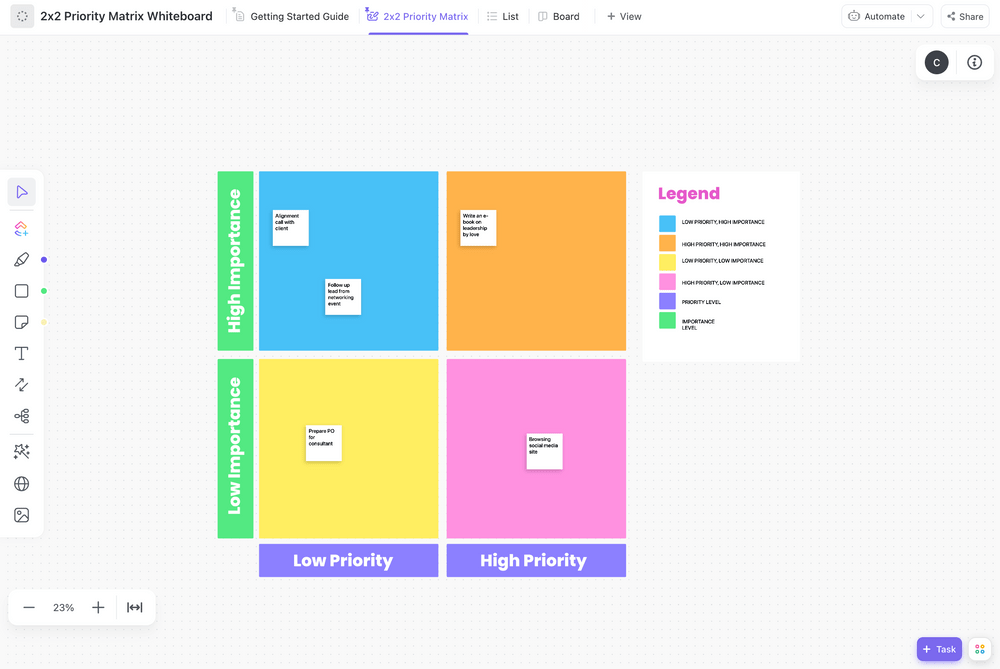

Do you ever feel like you’re just not getting enough done?
Like you’re always constantly behind and not getting enough done?
If so, then it might be time to create a productivity plan. A productivity plan can help you tackle your to-do list, get organized, and maintain your productivity levels, all without creating additional burnout. It’s your key to getting more done in less time without sacrificing your well-being.
But what does a productivity plan look like, and how do you create one?
In this article, we’ll explore the concept of productivity planning and provide seven steps for creating your own productivity plan that works for you, similar to how the Pomodoro Technique was created in the first place.
By the end, you’ll have a solid map that will guide you to better process efficiency and less burnout.
- What is a Productivity Plan?
- The Benefits of Productivity Planning
- 7 Steps for Creating a Productivity Plan
- Step 1: List out all your tasks and obligations
- Step 2: Note your obstacles and challenges
- Step 3: Track your time
- Step 4: Analyze where your time goes
- Step 5: Develop a strategy
- Step 6: Experiment and revise as needed
- Step 7: Use project management tools to keep your tasks visible and organized at all times
What is a Productivity Plan?
When most people are overwhelmed, they tackle their to-do lists without much thought or planning. This can work for a short period of time, but eventually, it will lead to burnout.
Research from CNBC found 50% of workers are burnt out and believe productivity paranoia creates extra stress for employees.
This is where a productivity plan can help.
A productivity plan is a document that outlines the steps you’ll take to complete your to-do list and incorporates strategic planning with time management and organizational skills to ensure all your daily tasks and overall goals are achieved.
It’ll require you to map everything you need to work on, address any potential roadblocks, and then devise a strategy for tackling each item. It also prioritizes your tasks and works with your natural productivity rhythms to ensure that you’re getting the most important things done.
While a business plan focuses your company’s efforts, an organizational productivity plan addresses all areas that may affect your overall productivity, including tactical, operational, and strategic planning.
Everyone can benefit from creating productivity plans. Whether you’re a business owner, a student, a busy parent, or a professional, a productivity plan can help improve your performance, timeliness, energy, and focus, and become more efficient and productive without sacrificing your well-being.
Let’s explore all the benefits you’ll experience once you create a solid productivity plan.
The Benefits of Productivity Planning
Productivity planning can lead to better focus and concentration, reduce stress, and increase awareness of your working habits.
Additionally, creating a productivity plan requires you to slow down and think about your work. This can lead to more thoughtful approaches and better problem-solving skills.
As a result, you’ll not only be able to get more done, but you’ll also be able to do it better.
Let’s take a closer look at each of these benefits.
Better focus and concentration
When you’re overwhelmed and unorganized, it’s difficult to focus on any one task. Your mind is racing, and you’re constantly jumping from one thing to the next. This can lead to mistakes, poor-quality work, and wasted time.
Productivity planning helps you avoid this by providing a roadmap for your tasks by mapping out what needs to be done and when you can focus your attention on one thing at a time. This leads to better focus, concentration, and overall quality of work.
Less stress
The chaos of an unorganized to-do list can be stressful and can leave you feeling behind and worrying about forgetting something important. This type of stress can lead to anxiety, sleeplessness, and even physical health problems.
Productivity planning helps to reduce stress by providing a clear system for managing your tasks. When you have a plan, you’ll feel more in control and less anxious about what needs to get done.
You can also avoid last-minute rushes and the associated stress by batching similar tasks together and completing them in one sitting.
Increased self-awareness
Another benefit of productivity planning is that it helps you to become more aware of your working habits. This process will require you to track your time, analyze your productivity patterns, and develop strategies for improving your efficiency. As you do this, you’ll gain valuable insights into your working habits.
This self-awareness can help you to identify any areas that need improvement. For instance, you might realize that you’re spending too much time on social media or that you’re more productive in the morning than in the evening. Once you identify these patterns, you can make changes to your productivity plan accordingly.
7 Steps for Creating a Productivity Plan
Now that you know all the benefits of productivity planning, it’s time to learn how to create your own productivity plan. Productivity planning is not difficult, but it does require some time and effort. Follow these six steps to create a productivity plan that works for you.
Step 1: List out all your tasks and obligations
The first step is to make an action list of all your tasks and obligations. Many people make the mistake of keeping their to-do list in their heads and don’t bother to write it down or organize it, causing them to forget or feel overwhelmed.
It’s time to work smarter and create better systems. Take the time to sit down and write out everything you need to do, be sure to include both big and small tasks, and note any deadlines or time-sensitive items as well. Once it’s all written down, you can start organizing accordingly.
Using a task management tool like ClickUp can help you manage and keep track of all your tasks in one place. It offers multiple ways to list and view your ClickUp Tasks, such as List, Board, Calendar, and Timeline view, to help you see your task most efficiently and effectively.

You can also take advantage of ClickUp’s Daily To-Do List Template—a simple routine digital planner tracker to help you build your habit and get your plans on track.
Step 2: Note your obstacles and challenges
Now that you have a list of all your tasks, it’s time to take a closer look at each one. For each task, note any potential obstacles or challenges you might face. This can include things like a lack of resources, challenging deadlines, or difficult collaborators. Even a lack of motivation should be noted, as it can impact your productivity significantly.

By taking the time to anticipate these challenges ahead of time, you can develop strategies for overcoming them. For instance, if you know you’ll be facing a difficult deadline, you can plan to start working on the task sooner. Or, if you know you’ll be lacking motivation, you can break the task down into smaller, more manageable steps.
Before sketching out your productivity plan, you need to have a clear understanding of how you’re currently spending your time. To do this, you’ll need to track your time for at least a week. Track the time of every essential task you complete in a day, including both work and personal tasks.
Step 3: Track your time
It’s also a good idea to track the time of any time-wasting activities you partake in, such as using social media. This will help you to get a better understanding of your productivity patterns and give you insight into how to use your time wisely.
There are a few different ways you can track your time. You can use a simple pen and paper method by writing down the time you started or use a productivity tool with a timer to simplify, automate, and keep the process consistent at all times.

ClickUp’s Global Time Tracker is a great option as it’s easy to use and saves reports of the time you tracked.
Step 4: Analyze where your time goes
How much time are you spending on these activities? Is there a way you can limit or eliminate them from your day?
Once you’ve tracked your time for a week, it’s time to analyze the information. Look at how much time you spend on each task and how that time is distributed throughout the day. This will give you a good idea of your current productivity patterns, including any time-wasting activities and behaviors.

You should also look for any productivity lulls you have during the day. Do you tend to lose focus in the afternoon? If so, can you move any tasks to be completed during this time to another part of the day?
Step 5: Develop a strategy
Now that you have a good understanding of your productivity patterns, it’s time to start developing a strategy to improve your productivity. There are many methods you can use to do this, so it’s important to find one that works best for you.
For some, their strategy simply might be to focus on one task at a time or do all their work at a particular time of day. For others, it includes incorporating a time management technique or a project management tool.
Pomodoro Technique
One of the most popular time management methods is the Pomodoro Technique. This technique involves working on a task for 25 minutes and then taking a five-minute break. After four Pomodoro sessions, you take a longer break of 20-30 minutes. The idea behind this technique is that by taking regular breaks, you can stay focused and avoid burnout.
To use this technique, you’ll need a timer to keep track of your work and break periods. There are many Pomodoro timers available online, or you can use a simple kitchen timer.
Eisenhower Matrix
The Eisenhower Matrix is a productivity technique that helps you to prioritize your tasks by their level of importance and urgency. This technique was developed by former President Dwight D. Eisenhower and is also known as the Urgent-Important Matrix. It was popularized by productivity expert Stephen Covey in his book, The 7 Habits of Highly Effective People, and has been utilized by millions of people since.
To use this technique, you need to first identify your tasks. Once you’ve done that, you can categorize them into one of the following quadrants:

🟢 Quadrant 1: Urgent and important (Do)
These tasks need to be completed immediately and are of the utmost importance. Examples of tasks that would fall into this category are meeting deadlines, putting out fires, etc.
🔵 Quadrant 2: Important but not urgent (Decide)
These are important tasks but don’t need to be completed immediately. These are the types of tasks that you should be focusing on as they can help you to avoid crises in the future. Examples of tasks that fall into this category are planning, strategizing, etc.
🟡 Quadrant 3: Urgent but not important (Delegate)
These are tasks that need to be completed immediately but aren’t important. These are generally distractions that can wait and shouldn’t take up a lot of your time. Examples of tasks that fall into this category are checking email, taking phone calls, etc.
🔴 Quadrant 4: Not urgent and not important (Delete)
These are tasks that aren’t urgent and aren’t important. These generally can be eliminated from your to-do list altogether. Examples of tasks that fall into this category are browsing the internet, watching TV, etc.
Ivy Lee Method
The Ivy Lee Method is a productivity technique that was developed in the early 20th century by efficiency expert Ivy Lee. It’s a very simple but effective technique that involves writing down your six most important tasks for the day and then focusing on one task at a time until it’s completed.
To use this technique, you simply need to write down your six most important tasks for the day before going to bed. Then, when you wake up, start working on the first task and don’t move on to the next task until the first one is completed.
This may seem like a simple technique, but it’s actually very effective in helping you to focus and get things done. You can practice this method in ClickUp; use ClickUp’s Get Things Done Template to give you a framework to start with and customize it to fit your working style and personal preferences.

Step 6: Experiment and revise as needed
No matter what technique you try, it’s important to experiment and revise as needed until you find one that works best for you. You probably won’t pick the perfect strategy immediately, so it’s important to be patient and keep trying new things until you find a productivity plan that works best for you.
Be patient, be persistent, and keep experimenting until you find a strategy that boosts your efficiency and brings more balance to your life.
Step 7: Use project management tools to keep your tasks visible and organized at all times
Luckily, these days we can utilize project management tools to improve our productivity. One of the best productivity tools is ClickUp. ClickUp can help you with all six previous steps, from action list organization to time tracking.
Project management tools are essential for keeping track of your tasks and ensuring that you’re staying on top of everything. By using a tool like ClickUp, you can ensure that your tasks are always visible and organized, which will make it easier for you to stay productive. Now that you know how to be more productive, it’s time to put your knowledge into action.
For example, you can create a 2×2 productivity matrix in ClickUp to help you prioritize and organize tasks. So if you’re struggling to develop or stick to your productivity plan, consider utilizing ClickUp’s productivity tools to help you out.

Create a Productivity Plan Today
Creating a productivity plan is a great way to boost your efficiency and get more done in less time. By taking the time to develop a productivity plan, you can increase your focus, reduce your stress levels, and learn more about who you are as a worker.
It can take some time and experimentation to find a to-do list system that works for you, but once you find and apply a productivity technique that works best, it’ll help you feel more prepared, balanced, and in control of your days.
And with the help of the right task management tools and to-do list software like ClickUp, you’ll get access to free templates to help you get started and improve productivity, as well as hundreds of customizable features to let you configure the platform in a way that best supports your workflow. Tools like ClickUp can help you create effective productivity plans, manage daily tasks, and improve operational planning—the list goes on.
So don’t give up, keep trying new things, and eventually, you’ll find a productivity plan that works best for you.
Guest Writer:

Dave Lavinsky is the president and co-founder of Growthink. Over the past 20 years, Growthink has helped over 500,000 entrepreneurs and business owners start, grow and exit their companies through our business plan template and consulting services.


